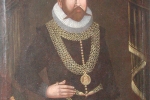He devoted his whole life to Braga in observing the sky, having achieved results with work and ingenuity, unprecedented in accuracy and breadth of coverage. Kepler wrote that Tycho Brahe began the "restoration of astronomy."
Most of the instruments at the Tycho Brahe Observatory were made by himself. To increase the accuracy of measurements, he not only increased the size of the instruments, but also developed new methods of observation that minimize measurement errors. Among his technical and methodological improvements
The armillary sphere was oriented not to the ecliptic, as was customary from the time of Ptolemy, but to the celestial equator. To increase accuracy, Brahe designed a special sight.
Instead of the Moon, he used Venus as an intermediate reference star, which practically did not move during the pause in observations.
After the invention of the telescope, the accuracy of observations sharply increased, but Brahe's improvements in the field of mechanics of astronomical instruments and methods of processing observations have retained value for a long time.
Tycho Brahe compiled new accurate solar tables and measured the length of the year with an error of less than a second. In 1592, he published the catalog of 777 stars first, and by 1598 he brought the number of stars to 1004, replacing the previously outdated Ptolemy catalogs that were previously used in Europe.
Brahe discovered two new irregularities ("inequalities") in the motion of the moon in longitude: the third (variation) and the fourth (annual). He also discovered a periodic change in the inclination of the lunar orbit to the ecliptic, as well as changes in the position of the lunar nodes (latitude ejection) Up to Newton, no corrections were needed in the theory of motion of the moon created by Brag.
For 16 years, Tycho Brahe has been continuously observing the planet Mars. The materials of these observations significantly helped his successor, the German scientist I. Kepler, discover the laws of planetary motion.
During the solar eclipse of 1560, the famous astrologer Tycho Brighe decided to study the stars
2019.08.21.






